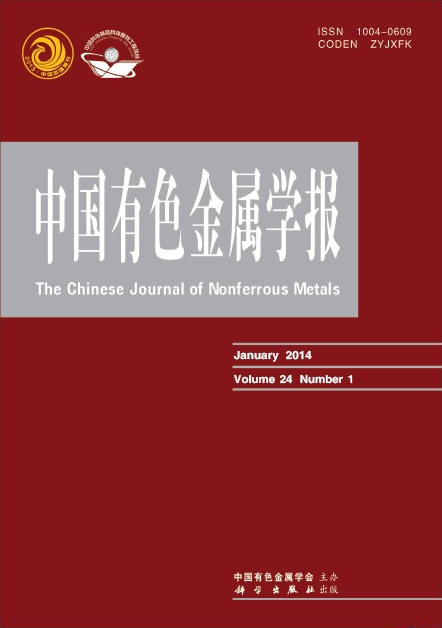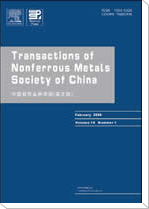(1. 中南大学 材料科学与工程学院,长沙 410083;
2.长沙南方钽铌有限责任公司,长沙 410133;
3. 中南大学 轻质高强结构材料重点实验室,长沙 410083;
4. 中南大学 粉末冶金国家重点实验室,长沙 410083;
5. 有色金属材料科学与工程教育部重点实验室,长沙 410083)
摘 要: 利用力学、电学性能测试,EBSD分析和透射电镜观察,研究冷锻态(变形量为56%)、375 ℃退火处理和375 ℃退火+600 ℃真空蠕变时效处理态Cu-0.05%Al2O3弥散强化铜合金的力学性能和组织结构的演变规律。结果表明:原始状态即冷锻变形态合金的抗拉强度为354 MPa、屈服强度为345 MPa、伸长率为9.6%、电导率为94.5%IACS。在对冷锻态试样进行375 ℃退火处理后,合金的屈服强度下降1.7%,但电导率提升0.5%;在375 ℃退火处理的基础上,对合金进行600 ℃、6 h真空蠕变时效处理,相比于冷锻变形态,蠕变时效后的样品屈服强度下降9.6%,但电导率提高1.6%。合金经600 ℃、6 h真空蠕变时效后屈服强度较冷锻态下降幅度不大的原因是:弥散强化铜合金中纳米弥散分布且高温稳定性好的Al2O3第二相粒子在较高温度下对晶界、亚晶界具有强烈的钉扎效果,使弥散铜经过蠕变时效后亚晶粒并未明显长大。通过理论计算和实验验证,确定合金的主强化机制为亚结构强化和第二相强化。
关键字: 铜合金;弥散强化;蠕变时效;亚晶界;力学行为
(1. School of Materials Science and Engineering, Central South University, Changsha 410083, China;
2. Changsha Nanfang Tantalum Niobium Co., Ltd., Changsha 410133, China;
3. Science and Technology on High Strength Structural Materials Laboratory, Central South University, Changsha 410083, China;
4. State Key Laboratory for Powder Metallurgy, Central South University, Changsha 410083, China;
5. Key Laboratory of Non-ferrous Metal Materials Science and Engineering, Ministry of Education, Changsha 410083, China)
Abstract:The mechanical and electrical properties of the Cu-0.23%Al2O3 dispersion strengthened alloy treated with cold forging, annealing at 375 ℃ and creep aging at 600 ℃ for 6 hours after annealing at 375 ℃ were measured respectively. The microstructure and properties evolution were investigated by EBSD and TEM. The tensile strength, yield strength, elongation and electrical conductivity of the cold forged sample, which is also the primary sample, are 354 MPa, 345 MPa, 9.6% and 94.5%IACS, respectively. After the alloy is annealed at 375 ℃, the yield strength reduces by 1.7%, but the electrical conductivity only increases by 0.5%. After annealed at 375 ℃ and creep aged at 600 ℃ for 6 h, the yield strength of the alloy treated with creep aging at 600 ℃ for 6 h reduces by 9.6% and electrical conductivity increases by 1.6%, compared with the primary sample. The yield strength of creep aging alloy decreases slightly compared with that of the cold forging alloy, which attributes to the dispersion distribution nano-alumina particles with high temperature stability and effectively pinning the grain boundaries and sub-grain boundaries at high temperature. The main strengthening mechanism is sub-structure strengthening and dispersion strengthening.
Key words: copper alloy; dispersion strengthened; creep aging; sub-grain boundary; mechanical behavior


